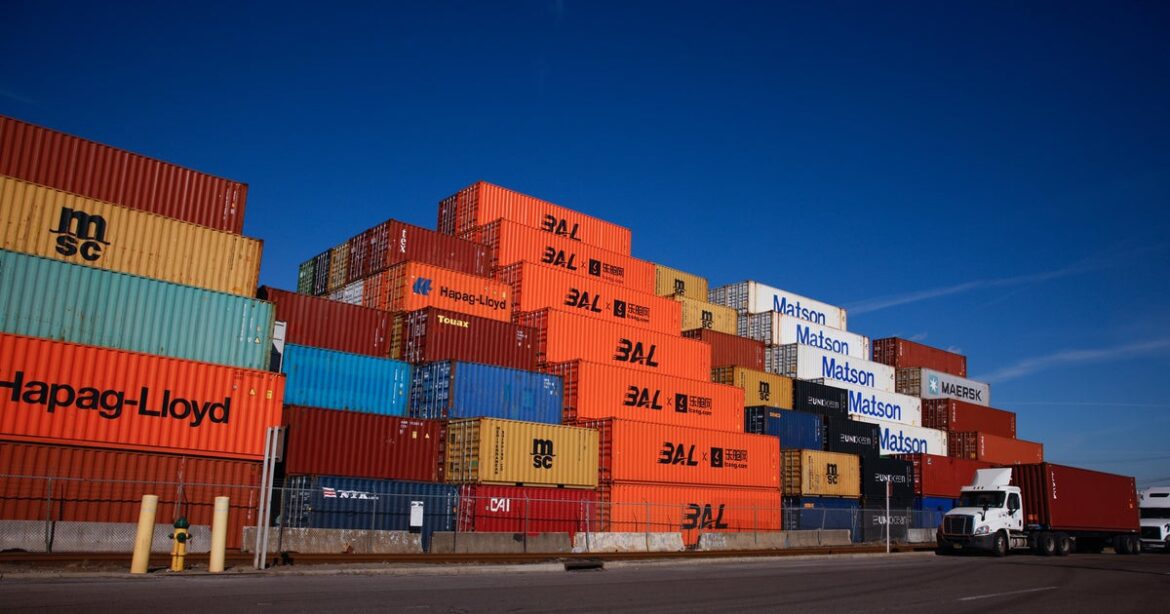Trump’s Tariff Policies: Impacts and Global Response
On Wednesday, President Trump’s tariffs on imports from various nations officially took effect, with a staggering 104% levy imposed on goods arriving from China. This move marks a significant escalation in the ongoing trade conflict and raises the stakes for global economic relations.
Market Reactions
The introduction of these tariffs has already begun to ripple through international financial markets. Major Asian stock indices experienced declines, with Japan’s Nikkei 225 dropping 3.9%, while Taiwan’s Taiex saw a drastic fall of 5.8%. European markets also plunged at the start of trading, with Paris, Frankfurt, and London each registering substantial losses of over 2%.
In the United States, futures for the S&P 500, Dow Jones Industrial Average, and Nasdaq Composite reflected a mixed response, with slight decreases in some areas while showing signs of recovery elsewhere.
Details of the Tariff Implementation
These latest tariffs add to the already tense economic environment, following the imposition of 10% tariffs on various goods over the weekend. Particularly hard-hit by these new tariffs is China, which is perceived as both a significant trading partner and America’s main economic competitor. Beijing has responded defiantly, stating its readiness to continue the trade fight.
Negotiations in Progress?
During a briefing, White House Press Secretary Karoline Leavitt conveyed that the strategic aim of the tariffs is to facilitate negotiations with international trading partners. “To countries around the world, bring us your best offers, and he will listen,” Leavitt stated, emphasizing that any agreements reached must serve the interests of American workers.
President Trump remarked that the administration is exploring tailored agreements with allies, particularly highlighting relationships with Japan and South Korea. According to top trade official Jamieson Greer, some countries like Argentina, Vietnam, and Israel have expressed willingness to reduce their tariffs in response.
China’s Response
China has remained steadfast in its position, vowing to persist in the trade conflict. The Ministry of Commerce declared a “firm will and abundant means” to counteract the tariffs imposed by the U.S. Furthermore, a white paper released by the Chinese government called for a constructive dialogue to resolve economic differences.
Initially, President Trump proposed an additional 34% tariff on Chinese products. However, following China’s retaliation with a similar tariff, the U.S. President escalated the increase to a remarkable 104%, which amalgamates existing tariffs applied earlier this year.
Consequences and Future Implications
The rationale behind these tariff policies is to rejuvenate manufacturing within the United States by encouraging companies to relocate their operations domestically. Critics, however, caution against potential adverse effects, including inflationary pressures due to rising consumer prices.
Trump claimed that tariff income is substantial, indicating the U.S. is “taking in almost $2 billion a day” from these levies. Notably, additional tariffs on pharmaceuticals are anticipated to be announced shortly, indicating that the approach is expanding to more sectors.
Global Reactions
As the situation progresses, Canada is set to implement its tariffs on specific American car imports, adding another layer of complexity to cross-border trade. The European Union has also been proactive in communicating with China, with its President, Ursula von der Leyen, urging all stakeholders to avoid further escalation of tensions.
In retaliation against recent U.S. tariffs on steel and aluminum, the EU is preparing to introduce up to 25% tariffs on a range of American goods, signaling that the trade conflict may escalate further unless diplomatic solutions are achieved.
Conclusion
The introduction of these tariffs demonstrates the ongoing volatility in global trade relations, with significant implications for markets, economics, and international diplomacy. As negotiations continue, the outcomes will significantly shape the future of trade partnerships around the world.

